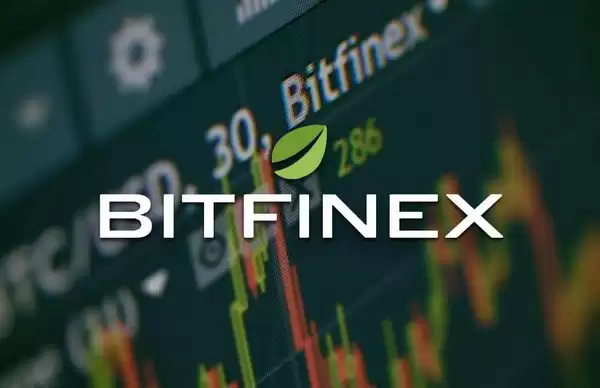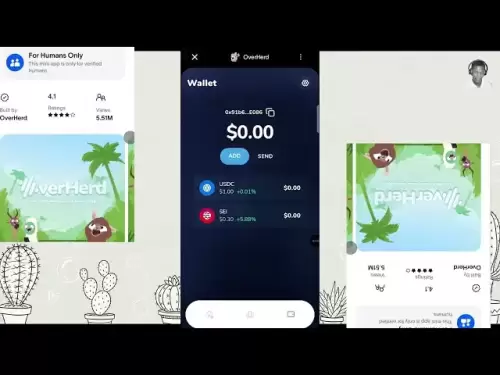-
 Bitcoin
Bitcoin $113600
-0.89% -
 Ethereum
Ethereum $3589
-2.33% -
 XRP
XRP $2.932
-4.03% -
 Tether USDt
Tether USDt $1.000
0.03% -
 BNB
BNB $749.6
-1.98% -
 Solana
Solana $163.0
-3.40% -
 USDC
USDC $1.000
0.02% -
 TRON
TRON $0.3322
-0.70% -
 Dogecoin
Dogecoin $0.1980
-4.93% -
 Cardano
Cardano $0.7186
-4.54% -
 Hyperliquid
Hyperliquid $37.47
-2.40% -
 Stellar
Stellar $0.3903
-5.01% -
 Sui
Sui $3.390
-4.44% -
 Bitcoin Cash
Bitcoin Cash $554.6
-3.01% -
 Chainlink
Chainlink $16.20
-4.35% -
 Hedera
Hedera $0.2354
-5.05% -
 Ethena USDe
Ethena USDe $1.001
0.01% -
 Avalanche
Avalanche $21.79
-4.49% -
 Litecoin
Litecoin $118.6
-2.39% -
 UNUS SED LEO
UNUS SED LEO $9.003
0.58% -
 Toncoin
Toncoin $3.166
-6.57% -
 Shiba Inu
Shiba Inu $0.00001200
-3.59% -
 Uniswap
Uniswap $9.486
-4.51% -
 Polkadot
Polkadot $3.596
-2.54% -
 Dai
Dai $1.000
0.01% -
 Monero
Monero $289.7
-3.54% -
 Bitget Token
Bitget Token $4.271
-2.32% -
 Cronos
Cronos $0.1386
-0.92% -
 Pepe
Pepe $0.00001007
-5.23% -
 Aave
Aave $253.1
-4.66%
Bitfinex leverage trading process
Leverage trading, accessible on Bitfinex's spot and derivative markets, allows traders to increase their purchasing power by borrowing funds, potentially amplifying both profits and losses.
Nov 10, 2024 at 11:35 pm

Bitfinex Leverage Trading Process: A Comprehensive Guide
Bitfinex is a leading cryptocurrency exchange that offers advanced trading features, including leverage trading. This allows traders to amplify their potential profits (and losses) by borrowing funds from the exchange. Margin trading, which is a type of leveraged trading, is available on spot and derivative markets on Bitfinex.
Margin trading involves borrowing funds from a broker or exchange to increase your purchasing power. This can be beneficial if you believe the price of an asset will rise, as it allows you to buy more of that asset than you could with your own funds. However, it is important to remember that margin trading also amplifies your potential losses, so it is important to use it wisely.
Steps for Leverage Trading on Bitfinex
- Open a Bitfinex Account
The first step is to open a Bitfinex account. This is a relatively straightforward process that involves providing some basic personal information and verifying your email address.
- Fund Your Account
Once you have opened an account, you will need to fund it with cryptocurrency. Bitfinex accepts a wide range of cryptocurrencies, including Bitcoin, Ethereum, and Tether.
- Enable Margin Trading
Once your account is funded, you will need to enable margin trading. This can be done by going to the "Trading" tab and selecting "Margin Trading" from the drop-down menu.
- Choose a Trading Pair
The next step is to choose a trading pair. Bitfinex offers a wide range of trading pairs, including BTC/USD, ETH/USD, and XRP/USD.
- Set Your Leverage
Once you have chosen a trading pair, you will need to set your leverage. Leverage is expressed as a ratio, such as 2x or 5x. This means that you are borrowing twice or five times your own funds.
- Place Your Order
Once you have set your leverage, you can place your order. You can choose to buy or sell the asset, and you can specify the order type (market order, limit order, etc.).
- Manage Your Position
Once your order has been placed, you will need to manage your position. This involves monitoring the price of the asset and making adjustments to your leverage or position size as needed.
- Close Your Position
When you are ready to close your position, you will need to place an order to sell the asset. Once this order has been executed, your position will be closed and you will receive the profits (or losses) from your trade.
10 Margin Trading Tips for Success
- Know Your Risk Tolerance
Margin trading can amplify your profits and losses, so it is important to know your risk tolerance before you get started. This means understanding how much you are willing to lose and how much you can afford to borrow. Start with a low leverage ratio as a beginner.
- Do Your Research
Before you place any trades, it is important to do your research and understand the risks involved. Read our Knowledge Center articles, utilize our 60+ charts and indicators, listen to webinars, and follow our analysts.
- Use Stop-Loss Orders
Stop-loss orders are a great way to manage your risk and limit your potential losses. These orders will automatically sell your asset if the price falls below a certain level.
- Don't Overtrade
One of the biggest mistakes that traders make is overtrading. This means trading too often or using too much leverage. Overtrading can lead to losses, so it is important to trade within your means.
- Use limit orders
Market orders are executed at the current market price, which can be disadvantageous if the market price is moving quickly. Limit orders allow you to specify the price at which you want to buy or sell, which gives you more control over your trades.
- Be Disciplined
Margin trading can be a profitable way to trade, but it is important to be disciplined. This means following your trading plan and not letting emotions get in the way of your decisions.
- Manage Your Risk
Risk management is critical to successful trading. This involves setting stop-loss orders, using leverage wisely, and not overtrading.
- Don't Chase Losses
One of the worst things you can do as a trader is to chase losses. This means trying to make up for lost profits by taking on more risk. This is a surefire way to lose more money.
- Only trade with funds you can afford to lose
Margin trading can amplify your profits and losses, so it is important to only trade with funds you can afford to lose. This means not borrowing money from friends or family to trade.
- Learn from Your Mistakes
Everyone makes mistakes when trading, but the important thing is to learn from them. This means analyzing your trades and identifying what went wrong so that you can avoid making the same mistakes in the future.
Disclaimer:info@kdj.com
The information provided is not trading advice. kdj.com does not assume any responsibility for any investments made based on the information provided in this article. Cryptocurrencies are highly volatile and it is highly recommended that you invest with caution after thorough research!
If you believe that the content used on this website infringes your copyright, please contact us immediately (info@kdj.com) and we will delete it promptly.
- DeriW Mainnet: Zero Gas Fees Revolutionize On-Chain Derivatives Trading
- 2025-08-06 10:30:11
- IOTA, Cloud Mining, and Eco-Friendly Crypto: A New York Investor's Take
- 2025-08-06 10:30:11
- Kaspa (KAS) Price Prediction: August 6 - Will It Break Free?
- 2025-08-06 10:50:12
- Meme Coin Mania: Arctic Pablo's Token Burn Ignites Presale Frenzy
- 2025-08-06 10:50:12
- Pi Network, Holders, and Market Turbulence: Navigating the Crypto Storm
- 2025-08-06 10:55:12
- XRP, DOGE, and the Altcoin Darling Dilemma: Where's the Alpha?
- 2025-08-06 08:30:11
Related knowledge

Why is my Bitstamp futures position being liquidated?
Jul 23,2025 at 11:08am
Understanding Futures Liquidation on BitstampFutures trading on Bitstamp involves borrowing funds to open leveraged positions, which amplifies both po...

How to report Bitstamp futures for taxes?
Jul 30,2025 at 08:35am
Understanding Bitstamp Futures and Taxable EventsWhen trading Bitstamp futures, it’s essential to recognize that these financial instruments are treat...

Does Bitstamp offer inverse contracts?
Jul 23,2025 at 01:28pm
Understanding Inverse Contracts in Cryptocurrency TradingIn the realm of cryptocurrency derivatives, inverse contracts are a specific type of futures ...

What is the difference between futures and perpetuals on Bitstamp?
Jul 27,2025 at 05:08am
Understanding Futures Contracts on BitstampFutures contracts on Bitstamp are financial derivatives that allow traders to speculate on the future price...

How to find your Bitstamp futures trade history?
Jul 23,2025 at 08:07am
Understanding Bitstamp and Futures Trading AvailabilityAs of the current state of Bitstamp’s service offerings, it is critical to clarify that Bitstam...

Can I use a trailing stop on Bitstamp futures?
Jul 23,2025 at 01:42pm
Understanding Trailing Stops in Cryptocurrency TradingA trailing stop is a dynamic type of stop-loss order that adjusts automatically as the price of ...

Why is my Bitstamp futures position being liquidated?
Jul 23,2025 at 11:08am
Understanding Futures Liquidation on BitstampFutures trading on Bitstamp involves borrowing funds to open leveraged positions, which amplifies both po...

How to report Bitstamp futures for taxes?
Jul 30,2025 at 08:35am
Understanding Bitstamp Futures and Taxable EventsWhen trading Bitstamp futures, it’s essential to recognize that these financial instruments are treat...

Does Bitstamp offer inverse contracts?
Jul 23,2025 at 01:28pm
Understanding Inverse Contracts in Cryptocurrency TradingIn the realm of cryptocurrency derivatives, inverse contracts are a specific type of futures ...

What is the difference between futures and perpetuals on Bitstamp?
Jul 27,2025 at 05:08am
Understanding Futures Contracts on BitstampFutures contracts on Bitstamp are financial derivatives that allow traders to speculate on the future price...

How to find your Bitstamp futures trade history?
Jul 23,2025 at 08:07am
Understanding Bitstamp and Futures Trading AvailabilityAs of the current state of Bitstamp’s service offerings, it is critical to clarify that Bitstam...

Can I use a trailing stop on Bitstamp futures?
Jul 23,2025 at 01:42pm
Understanding Trailing Stops in Cryptocurrency TradingA trailing stop is a dynamic type of stop-loss order that adjusts automatically as the price of ...
See all articles

























































































